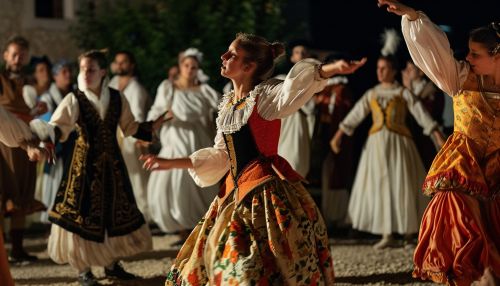Branle
History
The Branle, also known as the Brawl, is a type of dance popular in France during the 16th and early 17th centuries. It is characterized by its distinct pattern of sideways movements, where dancers move together in a line or a circle. The dance was often performed in a sequence of steps, which were repeated according to the structure of the music. The Branle was not only a popular court dance but also had variations that were danced by the common people.


Characteristics
The Branle is a simple dance, typically performed in a line or circle, with the dancers holding hands. The basic step of the Branle involves a series of side steps to the left, with occasional steps or hops to the right. The dance is usually accompanied by music, often played on instruments such as the lute or the hurdy-gurdy. The rhythm of the dance is typically in duple meter, with a strong downbeat at the beginning of each measure.
Variations
There are many variations of the Branle, each with its own unique steps and movements. Some of the most well-known variations include the Branle de Bourgogne, the Branle de Champagne, and the Branle de Poitou. These regional variations often reflect the local culture and traditions of their respective regions.
Influence
The Branle had a significant influence on the development of other dance forms. For instance, it is believed to have been a precursor to the polka, a popular dance form that originated in the 19th century. The Branle's distinct pattern of side steps is also seen in other traditional dances such as the farandole and the sardana.
In Popular Culture
The Branle has been depicted in various forms of media, including literature, film, and television. It is often used to evoke the atmosphere of the Renaissance period, particularly in historical dramas and period pieces.
